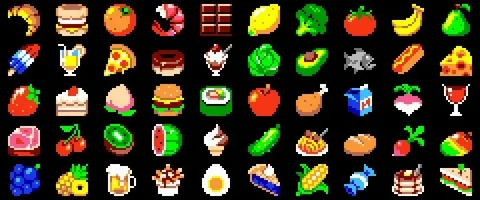In most games, you’re chasing enemies, scoring goals, or solving puzzles—but sometimes, the most memorable moments come from something far more relatable: food. Whether it’s cooking up pixelated meals or sharing a digital feast with NPCs, food in video games serves a surprisingly rich role in both design and storytelling.
It’s more than eye candy. It’s nourishment for immersion.
Cooking as Gameplay
Some games place food at the core of their mechanics. Take The Legend of Zelda: Breath of the Wild, where cooking meals is essential for survival. The right ingredients can boost stamina, improve stealth, or protect against extreme temperatures.
Or look at Overcooked, a fast-paced culinary chaos simulator where timing, coordination, and creativity rule the kitchen. In this case, food is the puzzle—and mastering it requires serious strategy.
These mechanics not only add depth but provide players with a sense of control and creativity through experimentation.
World-Building Through Cuisine
Food also helps games build believable worlds. In Final Fantasy XV, camping meals are stunningly realistic—players can practically smell the sizzling meat and glistening noodles. These dishes aren’t just visuals; they tie into the game’s travel narrative and the characters’ camaraderie.
In Stardew Valley, gifting food helps develop relationships. In Yakuza, eating at local restaurants reveals real-life Japanese menus. These culinary touches root the player in a cultural and emotional experience that’s more personal than a side quest ever could be.
Teaching Culture Through Cuisine
Some indie games take it further by using food to tell cultural stories. Games like Venba explore Indian culture through recipes passed down across generations, tying food preparation to heritage and identity. Cooking becomes a metaphor for memory and connection.
These games turn culinary tradition into interactive education—inviting players to engage with customs they might never experience otherwise.
The Comfort Factor
There’s also something emotionally grounding about digital food. In games full of conflict and challenge, a warm bowl of stew or a cup of tea can serve as a quiet moment of rest. It humanizes characters. It builds empathy.
Food is universal—even in fantasy.
Final Thought
Food in video games is more than a power-up or collectible—it’s a storytelling device, a mechanic, and a cultural bridge. It invites players to engage with digital worlds in tactile, familiar ways that blur the line between screen and life.
And as gaming continues to expand in style and subject matter—from narrative-rich titles to strategic platforms—spaces like oleng togel highlight how diverse the interactive experience has become, even outside traditional gameplay.


